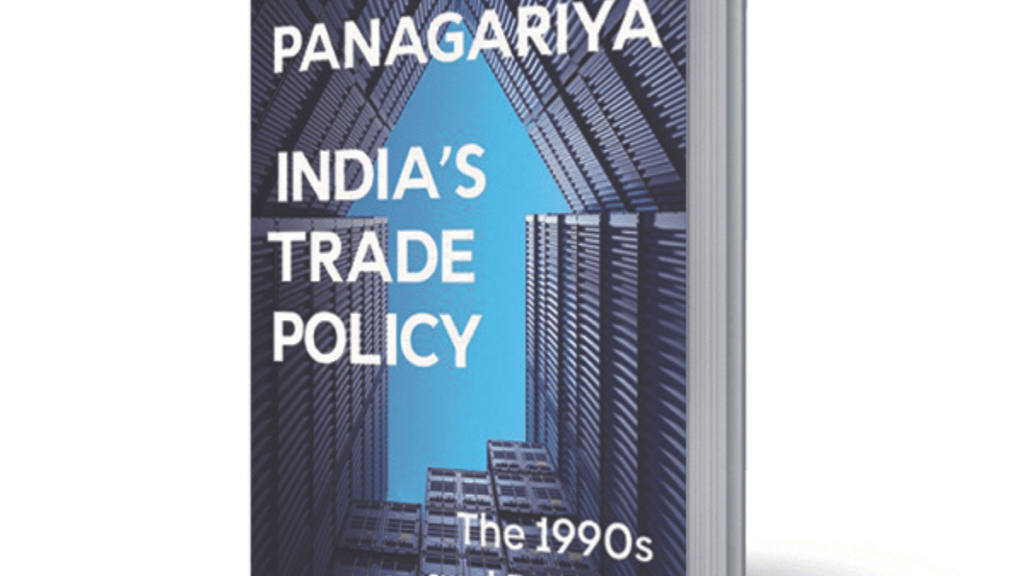A collection of articles written by any author over around two and half decades may not sound too exciting for the lay reader today. This is so because articles in the newspapers are relevant in the context of time and what could sound compelling in say 1995 may not really be relevant today. Hence for a publisher it is a challenge to lay out such an agenda. However, it is different when it comes to Arvind Panagariya, whose book India’s Trade Policy: The 1990s and Beyond, defies this sentiment. The book focuses primarily on the subject of free trade and investment issues as they evolved over the past three decades or so.
Panagariya’s book is a delight for students for sure as they get to read his arguments, which are compelling, on the subject. What is significant is that the author has not changed his view that free trade without any hindrance in the form of tariffs or quotas is the best for all countries. Classical economic theory based on the principles of David Ricardo had supported this doctrine in the late 18th and early 19th centuries. Clearly the author is a proponent of this school of thought. This is important because often, over the years, ideology changes with time, especially for trade, where the entire world is moving towards some kind of protectionism.
The articles are short, as per the requirements of a newspaper, and are hence very readable. There is one section on the pitfalls of import substitution that is refreshing. This was an ideology we had pursued in the Sixties and Seventies when the spirit of nationalism was high. The same has been argued for in the past few years too, though not overtly, when the talk is on ‘Make in India’. His view is that once we get into this mindset, there is room for inefficiency as competition weakens. The end result is that consumers end up paying more for lower quality products. This is a reality and has to be accepted once countries go in for such modules. In fact, even today there is one school that argues that the PLI benefits given to the mobile phones industry has only led to greater import of components that are assembled and exported. Hence when the case is made of higher exports of electronics, it continues to be a basket of assembled components used to manufacture mobile phones that are exported. A corollary is that the concept of self-sufficiency in the global context is quite irrelevant.
There is another interesting section on exchange rate that is pertinent even today. One of his articles argues for a single tariff rate, which makes sense as it is transparent and does not keep altering with times. He had argued as contemporary as 2022 that increasing customs duties to garner revenue is not a good idea. This was done in 2018-19 when duties were hiked in 42.3% of tariff lines without much analysis. The ostensible reason was that GST had been introduced and its efficacy on revenue collections was not clear. Increasing tariffs aided in enhancing revenue for the government. He argues for a review of all such duty structures to club them under new goods, existing products, motivation, etc, so that decisions in future may be taken.
Further, he is in favour of letting the rupee depreciate if the circumstances so warrant, as that is the best way to reach equilibrium. It is also a way of making Indian goods competitive in the market, especially at a time when our exports compete with countries like Vietnam where price sensitivity is very high for importing countries. This means that the RBI has to be alert all the time and ensure that the rupee is not kept stronger for longer.
There are also sections on our trade relations with USA and China separately over time. For USA his views do indicate that there is a lot of ambivalence shown by the USA when it comes to honouring the principles of free markets. While they have used threats, more recently under Donald Trump, to hike duties from certain countries, they don’t apply same principles on issues like services and patents. China has been different, where India has been on the receiving end with cheap goods flooding the market that have been countered at times by sanctions. The author argues in one of
the articles that China is the major source of our imports if oil is kept out and it is just not finished goods but also raw
materials and components that are part of the basket. Sanctions are not the answer as they would lead to disruptions
and the solution is to widen the basket of imports to other countries, which would serve us better.
Being an expert in all areas in the external sector, there are also articles on the WTO and various free trade
agreements. Here his views on the WTO starting from inception through all the discussion ‘rounds’ are covered which
provide useful insights into what went into these thought processes. His belief is that if it has failed, the main cause
has been the USA rather than the developing countries. But there are lessons to be learnt. This can also be seen as
guiding blocks for future as India needs to focus a lot on such agreements with more countries to ensure that we become part of global supply chains. Free trade agreements are a good way out, considering that WTO for all purposes is idle if not defunct, and all countries are operating outside this perimeter through such agreements. This is the only way to become more global.
Putting together a series of 70 articles published in various newspapers and journals over two and a half decades is a tall order as synchronisation under various broader issues is required. The recurring ideology of the author has been liberalisation and there has never been any deviation from this ideology. Therefore, the task of the publisher is easier due to the prevalence of consistency. Hence the views when read today would be compelling as there is a section of experts in this field who believe that with greater protectionism enveloping the world economy there is a loss of benefits of free trade for all countries. This tendency to move towards protectionism should stop.
The author is chief economist at Bank of Baroda.
India’s Trade Policy: The 1990s and Beyond
Arvind Panagariya
HarperCollins
Pp 360, Rs. 599

















